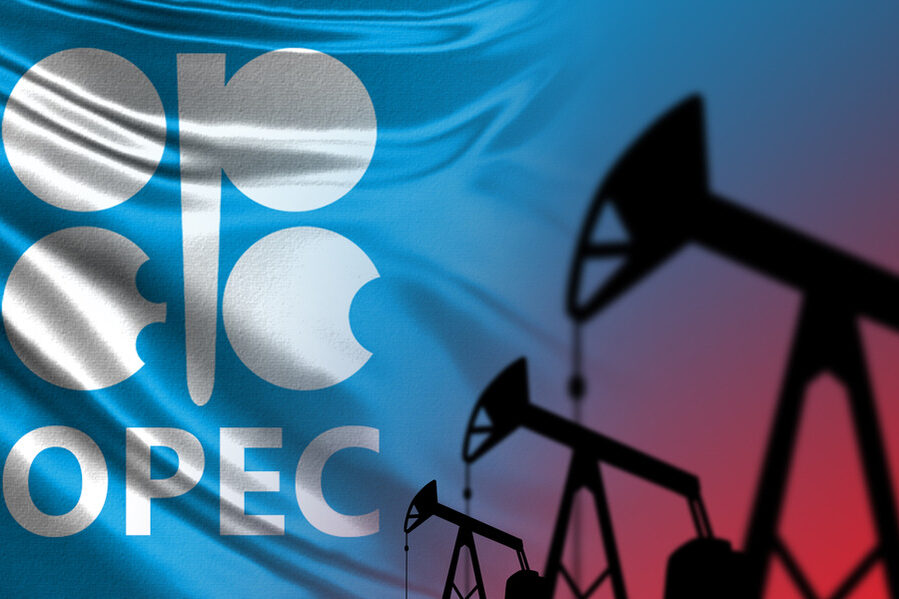The oil markets’ attention is focused on the OPEC+ meeting, which is scheduled for Sunday, June 4, 2023, to define the Alliance’s production policy for the following time, after some nations in the Alliance proposed a further voluntary drop in order to maintain stability and balance.
Despite oil prices plunging around $70 per barrel, four sources within the alliance told Reuters that OPEC and its allies would not deepen production restrictions at their ministerial meeting on Sunday.
OPEC+, which includes the Organization of Petroleum Exporting Countries (OPEC) and allies led by Russia, is known to supply approximately 40% of the world’s crude and 60% of the oil export market.
Read more: Saudi to speculators ahead of OPEC meeting: Beware
As the economic outlook worsened in April, many OPEC+ members offered 1.66 million barrels of voluntary reduction from May until the end of the year.
This amount was added to a 2 million barrels per day (BPD) cut agreed with in early October for output targets versus the August 2022 production baseline. Production cuts totaled 3.66 million barrels per day, or around 4% of global consumption.
The Group has recently been cut by more than its aims, owing to the limited capacity of producers in West Africa, Nigeria, and Angola.
According to a Reuters survey, the two countries did not meet their combined production targets of 600 thousand BPD in May, with delays in Iraq’s northern Kurdistan area causing the country to produce 220 1,000 bpd, which was lower than the target level last month.
Although the environment implies that OPEC+ will not approve a fresh cut, a last-minute surprise cannot be ruled out.
Saudi Energy Minister Prince Abdulaziz bin Salman warned against speculators betting on a drop in oil prices, which markets explained with the potential of a further cut in output. However, Russia’s deputy prime minister and group representative, Alexander Novak, said there was no need for additional output cuts because oil prices were expected to reach $80 per barrel by the end of the year.

Russia
The OPEC+ meeting comes as figures show that Russia has not entirely agreed to reduce production by 500 thousand barrels per day by March.
Russia, for its part, has affirmed that it is cutting production as planned, but analysts are skeptical, and since Moscow has stopped reporting official production levels, the market is looking at tanker tracking data.
These figures show that, even if Russia sticks to its pledge to cut output, its oil supply to foreign markets is increasing, notably in large Asian countries such as China and India.
According to Reuters, China and India have set all-time highs in their imports of Russian oil. It has resulted in a decrease in the share of Middle East and African ores in Asian countries, with purchasers – principally Beijing and New Delhi – scrambling to get supplies from Moscow, licenses, and inexpensive shipping costs.
Bloomberg’s review of shipping statistics on May 26 revealed that Russian oil shipments have not decreased in recent months.
According to the most recent tanker tracking data, Russian crude oil exports by sea are increasing rather than decreasing.
The International Energy Agency (IEA) stated earlier this month Russia has so far failed to limit its oil production by 500 thousand BPD and may be aiming to raise production to replace lost revenue.
Russian President Vladimir Putin claimed last week that energy costs were approaching “economically justified” levels.
On Thursday, the Kremlin emphasized a confirmation of collaboration between Moscow and Riyadh on oil production policies.
As the meeting approached, Kremlin spokesperson Dmitry Peskov said relations with Saudi Arabia were “constructive, very practical, and based on mutual understanding, respect, and trust.”
Oil prices surged Thursday, reversing earlier losses, as the prospect of a pause to interest rate hikes in the United States and a decisive House vote on the debt-limit deal fueled renewed optimism about future growth in fuel demand in the world’s largest consumer.
Brent crude futures for August delivery jumped 32 cents, or 0.44 percent, to $72.92, while West Texas Intermediate (WTI) crude rose 25 cents, or 0.37 percent, to $68.34.
For more news on energy, click here.








